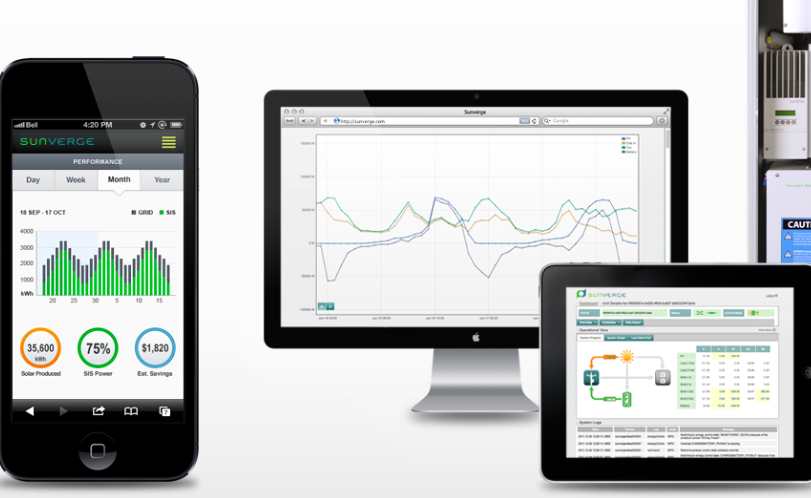Everyone, it seems, agrees that battery storage is the next big thing to affect global energy markets. What is not agreed upon is the timing. Some think this may happen in a few years, others in a decade or more. Some think it is happening now.
The big question for many is how quickly battery storage costs will fall in coming years. Will it be as dramatic as that of solar PV, which took everyone but a few solar savants off-guard and cut costs 80 per cent over a five-year period? Some – such as investment banking giants Deutsche Bank and UBS – say it will. Others say it is not possible.
Ken Munson, the founder and head of smart energy systems start-up Sunverge – which is backed by an Australian government-funded investor – is in no doubt that storage costs will fall. In fact, he thinks they could fall three times as fast as solar costs did.
In an interview in Australia during his latest visit, Munson said the key was not just in the cost of the actual battery, it was in the balance of systems and the smart technology that goes with it.
 “We see the same trajectory, probably being accelerated one-to-three times faster for the balance of plant and battery than what we experienced with solar over that same time horizon,” Munson told RenewEconomy. “That is pretty exciting.”
“We see the same trajectory, probably being accelerated one-to-three times faster for the balance of plant and battery than what we experienced with solar over that same time horizon,” Munson told RenewEconomy. “That is pretty exciting.”
Munson says the cost falls will be driven by the likes of Tesla, and its new giga-factory – and other electric vehicle manufacturers, as the penetration of EVs grows.
“That is simple supply economics. General trend on overall capacity that’s coming on line in market. But it is not just a question of improvements in chemistry, it is in the balance of system costs and the system controls.
“We are not a battery manufacturer, per se, our intellectual property is tied up in controls and balance of system controls. We are in a massive cost down move now that is both necessary and fundamental to achieving scale in the industry.”
The San Francisco-based Sunverge last year finished a major fund raising that was led by Australia’s Southern Cross Venture Partners ($A15 million sourced from the Australian Renewable Energy Agency), German industrial giant Siemens and France’s biggest oil company Total. Sunverge now has a partnership with SunPower, which is majority owned by Total, and its solar and storage pilot program with SunPower will include Australia.
Sunverge’s battery storage and energy management systems have been deployed in the groundbreaking solar-plus-storage leasing program from New Zealand energy utility Vector.
But Munson says the real innovation in storage will not be around chemistry or power electronics, or around the software. “It is around business model and innovation, rethinking and unpacking that problem.”
For this reason, Munson sees Australia as one of the most prospective markets in the world. That’s because of its high electricity costs, huge grid, expansive geography, excellent solar resources, and the penetration of rooftop solar PV.
But it’s also because the industry – from regulators down to networks and retailers, partly as a result from the boom in rooftop solar and the prospects for battery storage – are beginning to rethink their business.
“Australia is a key market, and one of the most interesting in world. It’s not going to change overnight … but this market is at the precipice of some really big change.”
As Munson mentioned in his interview with RenewEconomy last year, Sunverge is not looking to take consumers wholesale off the grid. What he is aiming to do is to hit the intersection of consumers – household and commercial and industrial, networks and retailers – and use the storage and power controls and algorithms delivered through “cloud” technology to create a “value stack” for all concerned.
“That way you don’t end up sacrificing one for the other. And it’s a win on the policy side because it delivers cost benefits to the market that make sense.”
The key is in the use of battery storage and power controls and algorithms delivered through “cloud” technology that simply didn’t exist five years ago in the electricity supply chain.
So, who or what is going to drive this change? Consumers, retailers, regulators, network operators, or policy makers?
“That’s a good question,” Munson says. “We are still trying to figure that out. Over the longer term, it will be a little of all that will drive real scale in industry.
“What we are seeing is … that there is a shift in demand from consumers. One day, a DNSP (network provider) or retailer will scale out, and that will create a chain effect where others join in.”
“Right now everyone is putting their foot in the water in different ways. It’s just a question of scale and speed.”









